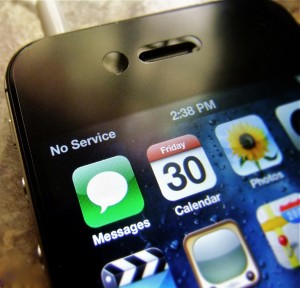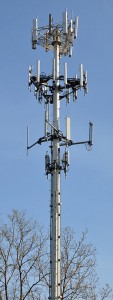Contributed by Leah (aka Momma Bear)
– –
 I’m the prepper of the family. Me, the mom, the wife, the taxi driver, the jack-of-all-trades. Military life frequently keeps my husband away from home (especially since 9/11/01). My husband is a Logistics Officer in the United States Marine Corps and we have lived/traveled all over the globe. Military spouses have to be both Momma and Poppa Bear most of the time. Even when my husband IS home and on a desk job he’s working at least 60 hours a week as the “norm”. We spouses become the planners, organizers, fixers, do-ers, and sometimes even the movers! He has to be able to do his job, knowing that “I’ve got the watch” at home, no matter what.
I’m the prepper of the family. Me, the mom, the wife, the taxi driver, the jack-of-all-trades. Military life frequently keeps my husband away from home (especially since 9/11/01). My husband is a Logistics Officer in the United States Marine Corps and we have lived/traveled all over the globe. Military spouses have to be both Momma and Poppa Bear most of the time. Even when my husband IS home and on a desk job he’s working at least 60 hours a week as the “norm”. We spouses become the planners, organizers, fixers, do-ers, and sometimes even the movers! He has to be able to do his job, knowing that “I’ve got the watch” at home, no matter what.
Living overseas, I have been closer to terrorism, epidemics, natural disasters and civil unrest than I ever would have imagined. Living and traveling in Europe brings a constant threat of terrorism. Americans tend to, mistakenly, believe that they are safe in Europe. The European Union has extremely open borders and many terrorist groups funnel through countries we have close ties with; such as Germany, where we lived (and where some of the 9/11 attackers lived). There were numerous incidents that occurred in areas where we routinely traveled. In the U.S., we are greatly distanced (both physically and in media coverage) from the activities and potential threats in Europe. Here are two articles: Germany Increasingly a Center for Terrorism in Europe and Kosovo Muslim Shoots U.S. Airmen in Germany (this occurred at the airport that we used while living in Germany).
Moving to Asia brought us other hazards. We were perilously close to the H1N1 flu virus while living on the island of Okinawa, Japan. During this time, airports throughout Asia, with so many people traveling internationally, had huge H1N1 screening areas for incoming travelers. The U.S. Navy ship my husband deployed on also experienced a series of quarantines after service members contracted the virus and it transmitted quickly throughout the ship.
In 2010, our family vacationed in Bangkok, Thailand. A week after our return to Okinawa, Thailand fell into civil unrest with riots and fire bombings. Several of the places we had just visited were completely burned down. From the flu to the riots, it was a history lesson in action for all of us.
 While living on Okinawa, we were also subject to earthquakes and the resulting tsunami alerts (Japan has an excellent public broadcasting alert system). In March 2011, when the earthquake, tsunami, and nuclear reactor leak devastated the mainland, my husband was one of many who were sent to assist. Horrific does not begin to describe it. The tsunami warning system DID go off, and yet so many were still caught by the disaster. While these are all valuable life lessons, especially for our children, some have been a little too close for comfort. I have developed a greater appreciation for the tenuousness of our place on this earth. These lessons lend themselves greatly to the value of being prepared.
While living on Okinawa, we were also subject to earthquakes and the resulting tsunami alerts (Japan has an excellent public broadcasting alert system). In March 2011, when the earthquake, tsunami, and nuclear reactor leak devastated the mainland, my husband was one of many who were sent to assist. Horrific does not begin to describe it. The tsunami warning system DID go off, and yet so many were still caught by the disaster. While these are all valuable life lessons, especially for our children, some have been a little too close for comfort. I have developed a greater appreciation for the tenuousness of our place on this earth. These lessons lend themselves greatly to the value of being prepared.
It is only natural that, since our recent return to the U.S. (we now reside outside of Washington D.C.), I am the tip of the spear in preparing for any eventualities at home. My husband fully supports my “prepping” and makes plenty of suggestions. After all, he has some serious survival skills himself! But the weight of the prepping falls to me based on his military duties and intermittent availability. Our planning often revolves around what, and how, we can do without him. Our kids are 13 and 16 and not exactly thrilled by the potential contingencies we are planning for. Nor are they excited by the subsequent “new lifestyles” they might have to endure should the SHTF. A typical “prepper” conversation at our house sounds ominously like, “You expect me to poop in a bucket?!” After life overseas they are grudgingly on board, but not always thrilled.
Like most preppers, the list of things we need (and need to learn) is much longer than I like to admit. We are “city folk” in this family and have never done many of the things we imagine we need to learn before the SHTF. I am a smart, crafty, handy woman who takes things seriously, especially prepping. While we are military (and I know most of you have some pre-conceived ideas about military type people and their hobbies), moving often makes it very difficult to own weapons (*add to list). The kids have never shot guns, and I haven’t since I was a kid (gun training, *add to list). While I do have experience with many classic skills, we have never grown our own food (*add to list). We haven’t even done much fishing or camping (*list!), let alone hunting (*LIST!). We are a modern, urban family who is preparing for the challenge of surviving, whatever the future throws at us.
In the meantime–like Trace and his family–I am making my plans, building up my supplies, looking for a “recreation property”, and learning as much as I can.
Momma Bear’s Bio
I am the mother of three (two teens and an adult), keeper of seven pets, a Marine Corps wife, Navy veteran, go-to family logisticator, international traveler, foodie, amateur artist, Germanophile, heavy-duty crafter, consummate volunteer, handy girl and part-time intellectual (if only there were more hours in my day). Currently we reside outside our nation’s capitol, in northern Virginia; after returning from six years of living abroad. With 22 years military service (his/mine combined), we have moved over 20 times; including multiple coast to coast and two international moves. We are city raised with little rural life experience.
 In our digital-age, paper is something we use less and less. If that’s the case, why would we think about adding paper to our preps? Because we’re preparing for a time where we might have to do without many modern conveniences. What would you do in a collapse without paper? All of the sudden everything would have to be written out by hand (or old typewriters): letters, instructions, directions, school work, financial records, business records, agricultural records, medical records. Nothing would be digital anymore; it’d have to be written and filed (remember the old days? Like the ‘80s?). What are you going to write on then?
In our digital-age, paper is something we use less and less. If that’s the case, why would we think about adding paper to our preps? Because we’re preparing for a time where we might have to do without many modern conveniences. What would you do in a collapse without paper? All of the sudden everything would have to be written out by hand (or old typewriters): letters, instructions, directions, school work, financial records, business records, agricultural records, medical records. Nothing would be digital anymore; it’d have to be written and filed (remember the old days? Like the ‘80s?). What are you going to write on then? The Chinese began making paper in the 2nd Century AD, from there it spread to the Arab world and to medieval Europe. It is recognized as one of the greatest communication tools ever invented. It’s development allowed education, record keeping, and correspondence to thrive like it never could before. Its said that the printing press ushered in the Industrial Revolution and the Renaissance, but they had to have paper to print on first.
The Chinese began making paper in the 2nd Century AD, from there it spread to the Arab world and to medieval Europe. It is recognized as one of the greatest communication tools ever invented. It’s development allowed education, record keeping, and correspondence to thrive like it never could before. Its said that the printing press ushered in the Industrial Revolution and the Renaissance, but they had to have paper to print on first. Today paper is cheap and available. I recently spent $40 on two boxes of 5000 sheets each; yes, Sarah shook her head when I came home with that much paper. But it’ll be good to include in our long-term storage; and, of course, we should have paper in our BOB*, car, and maybe even EDC. It’s easy to store, doesn’t take much space and, unless it gets wet, it’ll last for a long time.
Today paper is cheap and available. I recently spent $40 on two boxes of 5000 sheets each; yes, Sarah shook her head when I came home with that much paper. But it’ll be good to include in our long-term storage; and, of course, we should have paper in our BOB*, car, and maybe even EDC. It’s easy to store, doesn’t take much space and, unless it gets wet, it’ll last for a long time.






















